U Sports vs the NCAA: Canadian Varsity Swimming
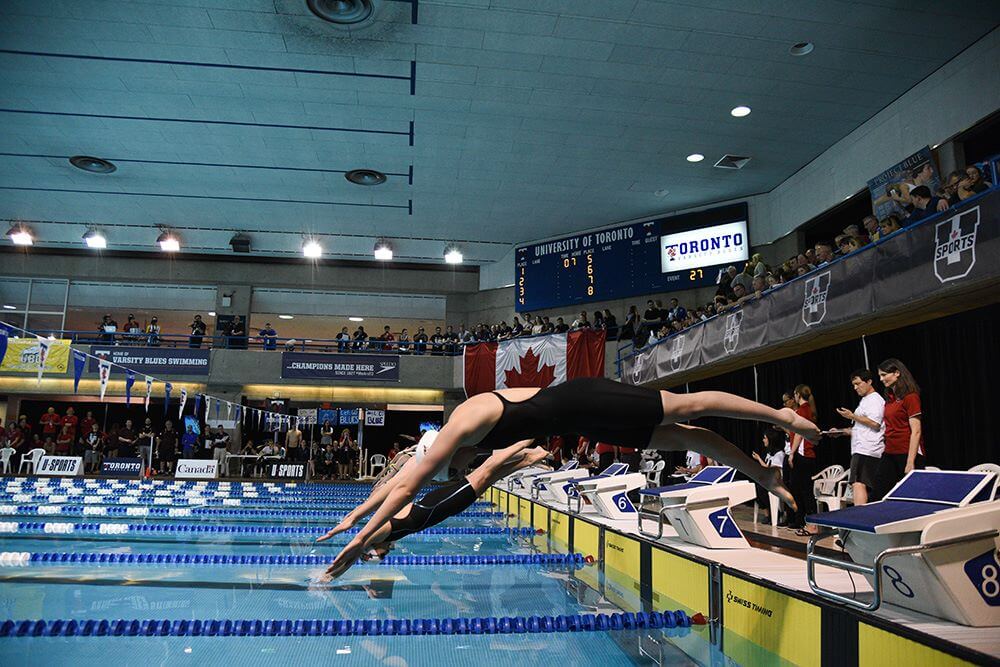
By Brian Palaschuk, Swimming World College Intern.
With the long course season in full swing, varsity collegiate swimming is out of most swimming fans minds right now. International swimming becomes the focus over the summer; however, swimming fans will be tuning in to collegiate swimming come September – namely NCAA Division I swimming.
Division I may be the most competitive varsity swimming league, yet other fast and fun varsity leagues exist both in the United States and the rest of the world. One of these is the Canadian University Swimming League: U Sports. Formerly known as Canadian Interuniversity Sport, U Sports is the “NCAA” of Canada. They are the governing body for all intercollegiate sport, including swimming.
The History of Canadian Collegiate Swimming
Much like in the NCAA, U Sports swimming has a rich history. Although Canadian varsity swimming had long been in existence, the first men’s U Sports Swimming Championships took place in 1964. Women’s swimming was added in 1971. Since then, U Sports has produced numerous Olympic swimmers and world record holders. The men’s team championship banner has been awarded 54 times, with the all-time leaders of the University of Toronto winning 19 titles. The women’s banner has been awarded 48 times, with the all-time leaders of University of British Columbia winning 22 titles. The defending U Sports Champions for both genders are the University of British Columbia Thunderbirds.
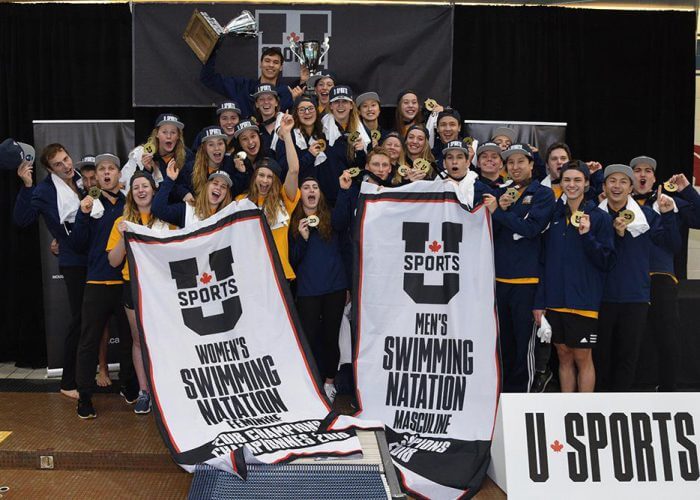
Photo Courtesy: Martin Bazyl
U Sports vs. the NCAA
U Sports swimming follows a similar season to the NCAA. Dual meets take place from September through January, followed by the conference championships and ending with the U Sports Championship in February.
The level of competition in U Sports is similar to NCAA Division II; however, U Sports swimming is getting more competitive every year. In fact, many notable Canadian swimmers compete for Canadian Universities, including University of Toronto’s world record holder Kylie Masse.
Other notable swimmers include the University of British Columbia’s world championship medalist Yuri Kisil and University of Montreal’s commonwealth champion Katerine Savard.
For high school swimmers looking to compete in college, U Sports is a great varsity swimming league in which to participate outside of the NCAA.
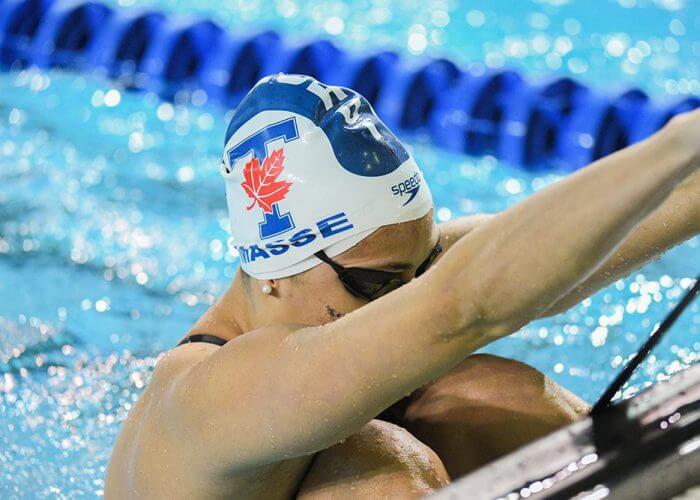
Photo Courtesy: Martin Bazyl
U Sports at a Glance
U Sports swimming is mostly conducted in short course meters. Swimmers have five years of eligibility as opposed to the four offered by the NCAA. Programs in U Sports swimming are co-ed, both in training and in competition, although championship banners are awarded separately.
Unlike the NCAA, U Sports Championships do not feature diving.
Financial Assistance
The extra year of eligibility is not the only part of financial assistance that differs from the NCAA. In the NCAA, athletes can receive books, room and board, tuition and fees. However, U Sports has more scholarship restrictions.
The main difference is that U Sports athletes may only receive scholarships up to the value of their tuition and fees; housing and books are typically not included.
There are a few other caveats with regarding scholarships that can be viewed in the U Sports scholarship document found here. Despite these restrictions, U Sports swimming can be a great option for graduating swimmers from Canada and international students.
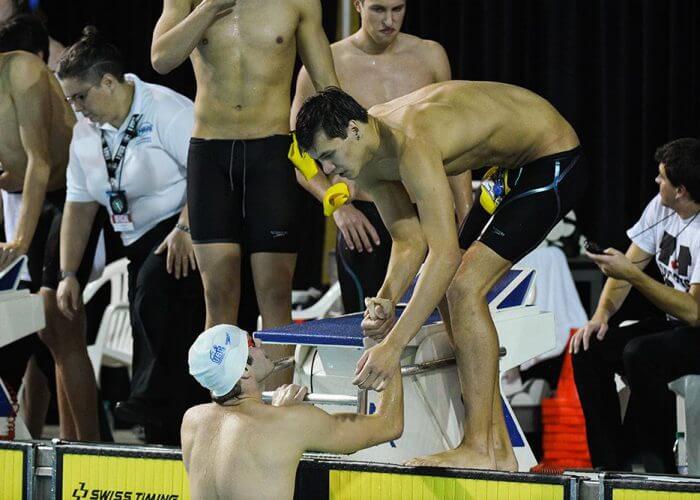
Photo Courtesy: Martin Bazyl
U Sports Championships
One feature unique to U Sports Championships is that the competition is not always in short course. Some years, the meet will feature short course prelims and long course finals. Additionally, although the meet is co-ed, men’s and women’s banners are awarded separately.
Qualification for U Sports Championships is similar to NCAA championships, with swimmers qualifying by achieving time standards throughout the season which can be viewed here.
The championships are spread out across four days where athletes may compete in four individual events and all three relays. Unlike the NCAA championships, U Sports does not feature 4×50 relays.
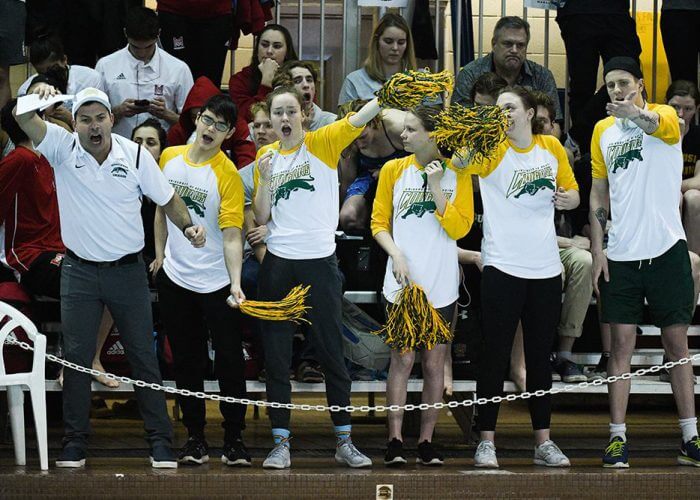
Photo Courtesy: Martin Bazyl
U Sports Programs
U Sports has four conferences: Canada West, Ontario University Athletics, the Quebec Student Sport Federation, and Atlantic University Sport.
Canada West
The Canada West division spans western Canada geographically. Canada West can be likened to the NCAA’s PAC 12 division. It features many competitive teams, including two of the main powerhouses of U Sports.
The first of these is the defending champions of this division and all-time women’s championship leaders – the University of British Columbia. UBC is a lot like Cal in the NCAA. They tend to have strong athletes across all strokes and distances and in both genders. Currently, the UBC women dominate the IM events, led by Olympic semi finalist Erika Seltenreich-Hodgeson. The UBC men have a great core of sprint freestyle swimmers, including Olympic semi-finalist Kisil.
The other dominant team in Canada West is the University of Calgary, boasting 19 men’s and 9 women’s Canada West championships. Calgary is more like the University of Georgia in the SEC. They have built championship teams with great IM swimmers and dominant 4×200 freestyle relays. Some notable alums from University of Calgary include two-time Olympic medalist Curtis Myden and Olympic gold medalist Mark Tewksbury. Other competitive teams in the conference are the University of Regina, University of Victoria and University of Alberta.
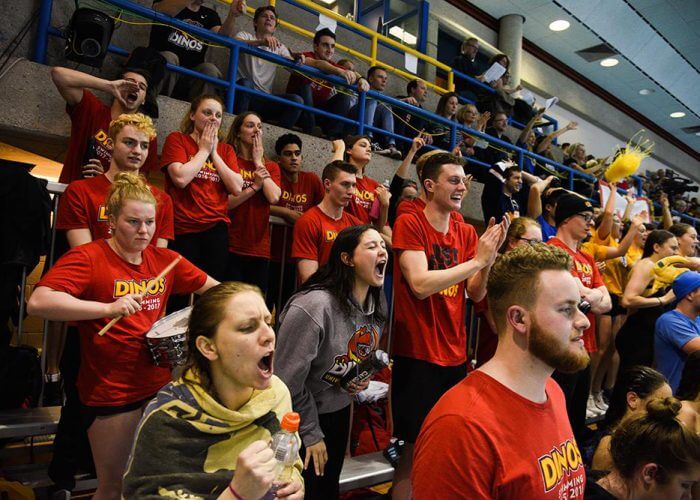
Photo Courtesy: Martin Bazyl
Ontario University Athletics
The OUA covers Ontario, Canada’s most populous province. If Canada West is like the PAC 12, OUA is more like the SEC.
The OUA boasts the most winningest men’s U Sports team in history – the University of Toronto, whose NCAA counterpart would be the University of Texas. Toronto has been led by coach Byron MacDonald since 1978, the same year Eddie Reese took charge at the University of Texas. Under his tenure, they have won their U Sports titles with great depth and strong relays. U of T is also home to 100 backstroke world record holder Masse who will be joined by world junior champion Rebecca Smith in the fall. The OUA conference is also home to U Sports’ top ten teams of Western University and McMaster.
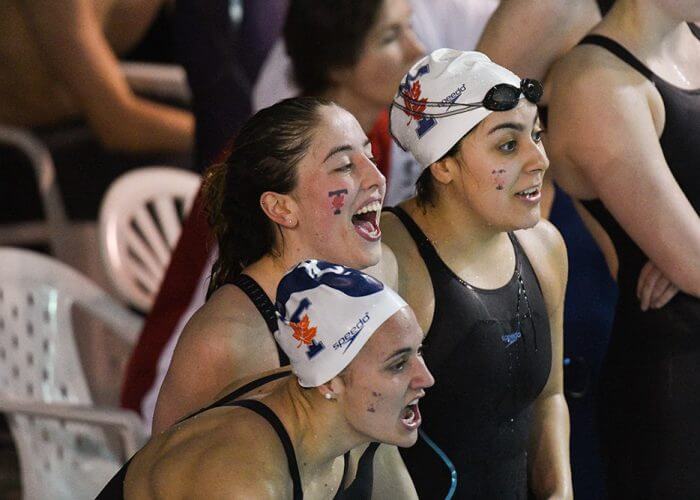
Photo Courtesy: Martin Bazyl
Quebec Student Sport Federation
RSEQ is the conference of Quebec, Canada’s only French-speaking province. RSEQ is similar to the ACC: They have a few competitive teams but not as much depth as Canada West or the OUA.
The defending RSEQ men’s champions are McGill University, while the champions on the women’s side are the University of Montreal. McGill is similar to Stanford in the NCAA. They are well known for their great academic programs and currently have a deep roster that lacks the star power of University of Toronto but has many scoring swimmers.
University of Montreal has a dominant women’s team, featuring 2016 Olympic medalists Sandrine Mainville and Katerine Savard. Other strong teams include Laval and RSEQ newcomers, the University of Ottawa.
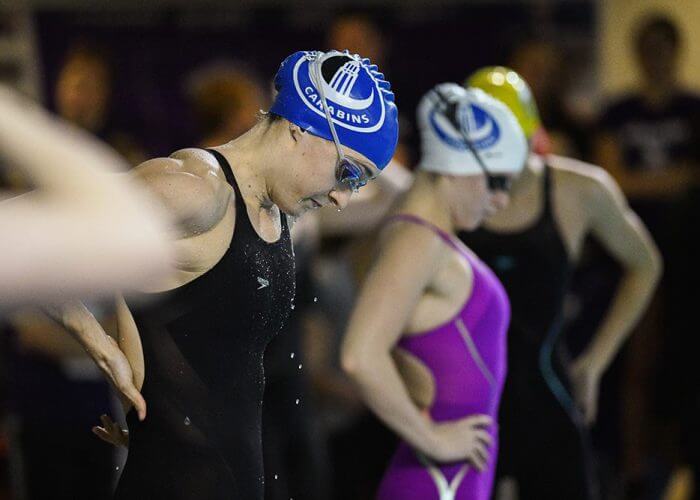
Photo Courtesy: Martin Bazyl
Atlantic University Sport
The Atlantic Swimming conference is located on the east coast of Canada. AUS can only be compared to the BIG 12. They do not have as many teams as the other conferences and have been dominated for the last 20 years by current AUS champions, Dalhousie. Notable alumni of Dalhousie include 2012 Canadian Olympian David Sharpe and 1976 Olympic bronze medalist Nancy Garapick.
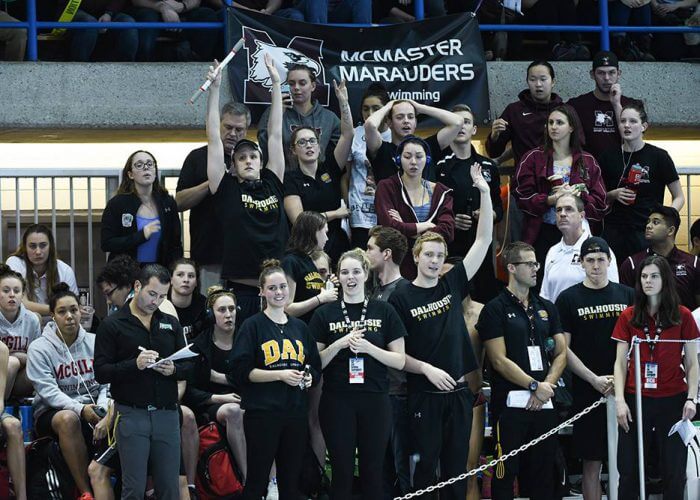
Photo Courtesy: Martin Bazyl
Whether you are a swim fan who can’t get enough collegiate swimming or a high school swimmer looking to pursue varsity swimming, be sure to check out the exciting rivalries in U Sports this September!
More information about U Sports and U Sports swimming can be found at their website: usports.ca




Hannah Gill
U sports so generously gives us 5 years of eligibility
Hannah Gill you are SO LUCKY